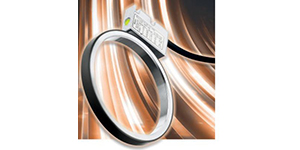The Right Turn
 Encoders can become key elements in smart decentralized drive systems. And if encoders themselves become smart, they can increase further the performance of such systems.
Encoders can become key elements in smart decentralized drive systems. And if encoders themselves become smart, they can increase further the performance of such systems.
The integration into a system of components that were until now mounted separately is a current trend in drive technology. If, some years ago, motor, feedback system (tacho, resolver, incremental or absolute encoder, etc.), wiring, drive amplifier and control were strictly separated, there are today many decentralized drive systems integrating everything, up to the drive amplifier with PLC functionalities.
This trend forces the encoder manufacturers to develop new, integrable solutions, aiming to make the complete system of controlled drives more compact, more reliable, more efficient and, not least, more cost-effective. Particular challenges arise during integration when drive systems that used until now, due to their efficiency, feedback systems made of high-resolution optical encoders with integrated bearings must be equipped with compact bearingless and robust magnetic encoder systems to save space and costs.
Bearingless Magnetic Encoders
The encoder manufacturer Kubler managed to integrate compact bearingless magnetic encoders in and on servo drive motors, even though the magnetic measuring principle actually does not allow their use in the immediate vicinity of magnetic interference fields as they are generated by electrical motors and especially electromagnetically actuated brakes. This success is in particular due to FEM-calculated shielding systems and a smart digital real-time signal processing.
The term "smart" hides in two respects innovative developments: On the one hand, a digital, FPGA-based signal processing actively compensates drifts and signal errors due e.g. to temperature, aging and mounting tolerances and therefore allows, in spite of a comparatively coarse division of the magnetic material measure, achieving accurate and high-resolution state variables. On the other hand, the anyway available knowledge of the relevant drive system parameters allows condition monitoring and predictive maintenance.
The possibility to parameterize also the integrated digital signal filters with delay compensation, which showed to be very advantageous in many applications, and an electronic nameplate including a user memory complete the equipment features. Kubler experts managed to integrate feedback systems with an unusually high signal quality and still showing the compactness and reliability required for the integration.
Present and Future Developments
Customer discussions already point to the future developments: So the smart encoder integrated in the drive system will not simply become the information center for the drive supplying in real time the state variables position, rotational speed and acceleration, but it will be also a hub for further measured values such as e.g. the temperature and the lateral acceleration (vibration). Thanks to the bearingless construction and thus the direct mechanical coupling on the drive, these latter sensors can be integrated in the encoder electronics and, moreover, correlated with the other measured values (sensor fusion).
Kubler's new smart systems are of course designed for fully digital communication with the drive controller, e. g. via RS485, BiSS, etc. In the event of so-called electronic motors, direct coupling to the control processor situated in direct proximity can take place via SPI or the like. Expensive driver modules and complex wiring are then no longer necessary. Suitable signal converters with real-time synthesis in the FPGA are available for the communication with the still very common interfaces such as TTL and HTL incremental signals, Sin/Cos signals or real-time SSI.

